#6-pounder field gun
Photo

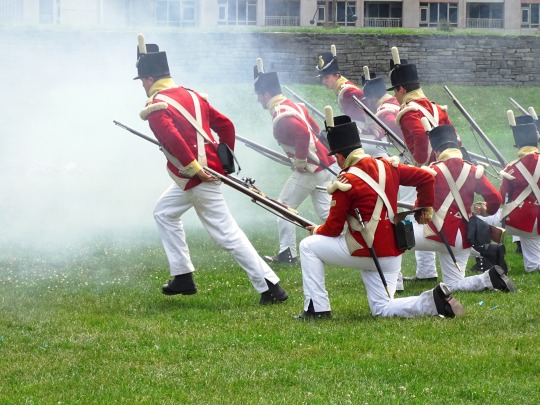
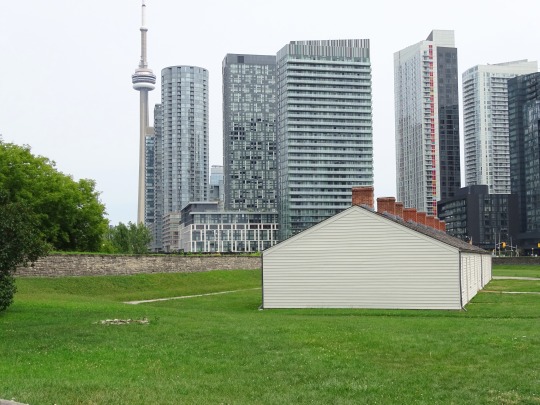






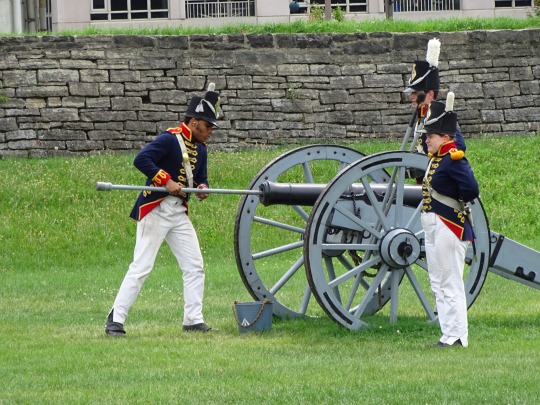
War of 1812: American troops captured York, the capital of Upper Canada, in the Battle of York on April 27, 1813.
#Fort York National Historic Site#Fort York Squad#historical reenactment#travel#Toronto#Ontario#Canada#summer 2018#original photography#vacation#Fort York Guard Royal Artillery#6-pounder field gun#War of 1812#US troops#captured#Battle of York#27 April 1813#110th anniversary#US history#Canadian history#architecture#cityscape#tourist attraction#landmark
4 notes
·
View notes
Text
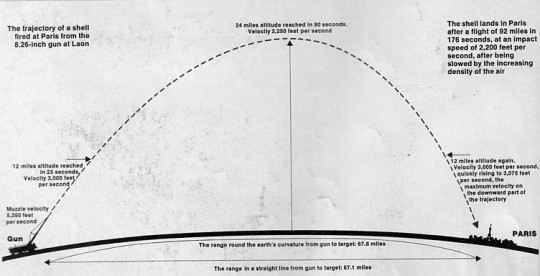

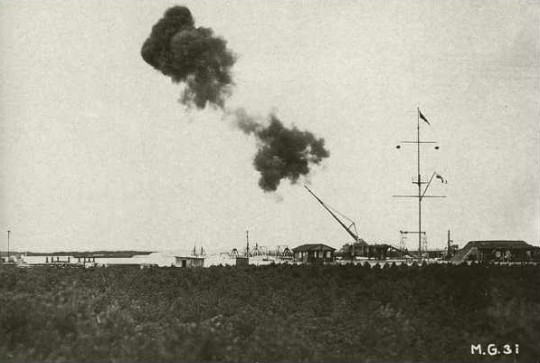
The Paris Gun
The Krupp arms-making dynasty was founded in Essen upon the fortune amassed by Arndt Krupp, who settled in that city in 1587. His son Anton expanded the family’s endeavors into making firearms during the Thirty Years’ War of 1618-1648, and the family progressively expanded its operations over the ensuing decades. In 1811, Friedrich Krupp (1787-1826) established a steel casting facility, and, although he successfully began casting steel in 1816, he expended considerable funds in the process. His son, Alfried (1812- 1887), continued his father’s work and eventually re-established the family fortune. By its nature steel was very difficult to cast, and internal faults were often impossible to detect through existing testing procedures. Defective cast steel pieces were also much more dangerous to crews than iron cannons, as the softer iron tended to split or burst with less energy than the harder steel, which more often ruptured with deadly violence. The Krupp firm’s success in casting steel was considered one of the major metallurgical achievements of its day.
Beginning in 1844, Alfried Krupp began experimenting in machining guns from solid cast steel blanks and in 1847 produced his first steel cannon. That same year he presented a steel gun to the King of Prussia, Frederick Wilhelm IV (1795-1861)-an act of entrepreneurial generosity that later won an order for 300 field guns. He went on to display a 6-pounder muzzleloading gun at the Great Exhibition of 1851 and began experiments in developing breechloading weapons. In 1856, Krupp introduced a 90mm field gun fitted with a transverse sliding breechblock that fit through a corresponding slot in the rear of the barrel.
Germany subsequently made the transition to rifled breechloaders during the 1860s, a move that gave it a distinct artillery advantage during the 1870-1871 Franco-Prussian War. Shortly after the war it adopted 78.5mm guns for its horse artillery and 88mm pieces for field use. The logistical difficulties associated with supplying two sizes of ammunition in the field and recent advances in metallurgy and gun design then led to the Model 73/88 system, which used the 88mm caliber for both horse artillery and field use and the later Model 73/91 system, utilizing nickel steel barrels. The Model 73/91 was finally superseded by Germany’s answer to the French 75-the Model 96 or Feldkanone 96 neur Art.
The development of specialized antiaircraft artillery also intensified during the war. The first documented use of antiaircraft artillery occurred as early as the siege of Paris during the Franco-Prussian War in 1870. At Paris, the Prussian commander von Moltke ordered weapons from Krupp in order to shoot down balloons in which the French were trying to sail over the Prussian lines. Krupp eventually delivered a number of single-shot, caliber 1-inch rifles that were mounted on pedestals bolted to the beds of two-horse wagons; they theoretically could follow the balloons on the ground while maintaining a steady firing rate. The Krupp pieces were relatively ineffective, yet at least one French balloon was apparently downed by their fire.
The rapid proliferation of powered military aircraft at the turn of the century, however, spurred an equally dedicated effort to neutralize the threat of air attacks. During the 1909 Frankfurt International Exhibition, Krupp unveiled three antiaircraft guns in a bid to monopolize the emerging market. These included a caliber 65mm 9-pounder and a 75mm 12-pounder. Krupp claimed that the largest, a pedestal-mounted 105mm gun intended for shipboard use, achieved a maximum ceiling of 37,730 feet. The caliber 65mm gun had an 18,700-foot range, could elevate 75 degrees, and its carriage had unique hinged axles that allowed the wheels to be pivoted to a position perpendicular to their traveling position. With the trail spade acting as its axis, this arrangement enabled the crew to traverse the piece 360 degrees to track enemy aircraft. With a claimed maximum ceiling of 21,326 feet, the caliber 75mm gun was mounted on a truck bed, thus giving it a high degree of mobility. Not to be outdone, Erhardt, Krupp’s closest domestic competitor, also exhibited a 50mm quick-firing antiaircraft gun mounted in an armored car’s turret.
The period also witnessed considerable experimentation in antiaircraft shells and fuses. Krupp introduced a high-explosive shell for its 3-pounder equipped with a “smoke-trail” fuse, an early tracer round that both aided the crews in sighting and was an effective incendiary against the hydrogen-filled airships of the period.
During World War I the Germans continued to experiment in antiaircraft weaponry, beginning in 1914 with the 77mm Ballonen-AK. The Ballonen-AK was then, in turn, followed in 1915 by the 77mm Luftkanone, a basic 77mm field cannon barrel mounted on a rotating scaffolding. The more effective Krupp 88mm FlaK entered service in 1918 and eventually became the inspiration for the famous World War II German “Eighty-Eight.”
Popularly named after Alfred Krupp’s daughter, the 41.3-ton, 420mm “Big Bertha” had a horizontal sliding block and fired a 1,719-pound shell up to 10,253 yards. Big Bertha required five tractors to transport its components, and it had to be assembled on site. In conjunction with a number of Austrian Skoda 305mm howitzers, the L/14 was first used with devastating effect against Liege in August 1914; it saw other action on both the Western and Eastern fronts. Owing to its relatively short range and vulnerability to Allied fire, Big Bertha was obsolete by 1917. Another heavy piece, the 211mm Mörser was adopted in 1916. It weighed 14,727 pounds and fired a 250-pound shell up to 12,139 yards.
Designed by Krupp engineers and adopted in 1918, the Paris Gun used the basic 380mm Max railroad gun barrel fitted with a barrel liner and lengthened 20 feet. The 210mm Paris Gun weighed 1,653,470 pounds and mounted a 2,550-inch barrel with a horizontal sliding block. It fired a 264-pound shell up to 82 miles. Crewed by naval personnel, the Paris Gun was so powerful that it fired its shells into the stratosphere, where the thinner atmosphere exerted less resistance, allowing such long ranges. The stress on the bore, however, wore the barrel significantly, and each succeeding projectile had to have progressively larger driving bands and heavier powder charges to compensate for the increasing windage. Although hugely inefficient in the final analysis, the Paris Gun’s greatest value lay in its use as a propaganda tool rather than an artillery piece.
Source
26 notes
·
View notes
Text
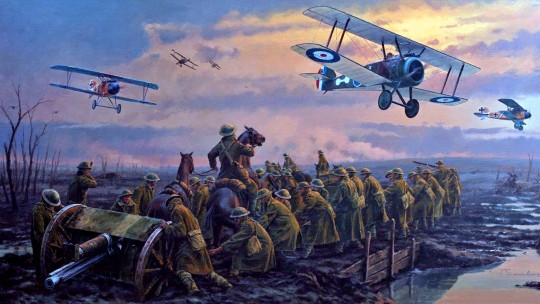
1917 11 15 The Big Push - Anthony Saunders
The Battle of Passchendaele lasted for four months and ended in November 1917. Nearly a quarter of a million British, Canadian and New Zealand troops died while fighting for control of the ridges to the south and east of Ypres. It was a high price for victory.This outstanding painting depicts men and horses of the Royal Field Artillery, swamped by mud in a desolate, shattered landscape, dragging their 18 pounder field gun towards a new position on 15 November 1917, during the final days of the battle. Whilst the army continues its grim fight on the ground, overhead Sopwith Camels from 45 Squadron Royal Flying Corps tangle in a deadly duel with German Albatros fighters of Jasta 6. Flying the lead Sopwith Camel is the RFC Ace Second Lieutenant Kenneth Montgomery. He scored the last of his 12 victories in this dogfight when he shot down the German Ace Leutnant Hans Ritter von Adam, the Commanding Officer of Jasta 6 with an impressive 21 victories to his name.
57 notes
·
View notes
Text
HMS Wasp - 1812-1846
Warship – 386 tons burden – 120 crew
The fourth Wasp of the Royal Navy was constructed following the beginning of hostilities with the USA, as the British need for convoy escorts and other light ship roles grew once more. She was a member of a large class of sloops built from 1802, following the design of the Cruizer, launched in 1797. In this period the Navy was increasingly embracing standardisation as a means to improve efficiency and to keep costs down, the latter concern of particular importance given the ballooning expense of maintaining what was ever more a global thalassocracy.
The Cruizer-class were rigged as brigs, emphasising agility over durability and comfort. While this meant that they struggled with very long-range assignments, it also made them well-fitted for a wide variety of roles. The ships handled well, which was crucial given the range of climates in which they were deployed. They were also heavily-armed for their size – the standard armament, as seen on the Wasp, was two 6-pounder guns in the bow and then sixteen 32-pounder carronades with which to deliver broadsides. These were very powerful weapons at close range, but perhaps more importantly for the Navy required fewer gunners and were thus cheaper to field. The overarching push for economy did tend to put the class at a disadvantage against similar ships deployed by other states, but allowed for great numbers to be operated simultaneously.
The Wasp was unsurprisingly dispatched to North America shortly after her launch, assigned to protect British shipping from raiders like the two USS Wasps. Yet she does not appear to have seen any real combat before the war ended in 1815. She did see a long service life after the war, deployed on patrol to various routes in the Atlantic but particularly to the Mediterranean. The demands of far-flung deployments led to an additional mast being added during the 1820s. As part of a hastily-gathered fleet she took part in the capture of Akka in 1840, when a British-led coalition intervened to prevent the collapse of Ottoman rule in Syria. The Wasp’s last deployment was to the coast of West Africa interdicting the slave trade, before she was finally retired in 1846.
Wasp was by this point a standard name for British sloops, not only bearing connotations of speed, agility and aggression but placing the ships in a grand tradition of British naval power.
0 notes
Photo
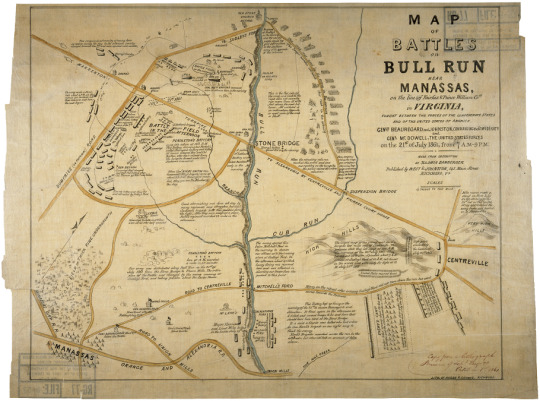

Map of the Battles of Bull Run, 7/21/1861
File Unit: Virginia and the Chesapeake Bay, 1784 - 1890
Series: Civil Works Map File, 1818 - 1947
Record Group 77: Records of the Office of the Chief of Engineers, 1789 - 1999
Image description: Map of the area of Bull Run, showing roads, terrain, troops, structures. There are many notes describing different areas.
Image description: Zoomed-in portion of the map showing the “Battle Field in the Afternoon” area.
Transcription:
MAP
OF
BATTLES
ON
BULL RUN
NEAR
MANASSAS,
on the line of Fairfax & Prince William Coes.
in VIRGINIA,
FOUGHT BETWEEN THE FORCES OF THE CONFEDERATE STATES
AND OF THE UNITED STATES OF AMERICA.
GENLS BEAUREGARD and JOHNSTON, COMMANDING the CONFEDERATE
and
GENL. McDOWELL, THE UNITED STATES FORCES
on the 21st of July 1861, from 7 A.M. - 9 P.M.
MADE FROM OBSERVATION
BY SOLOMON BAMBERGER.
Published by WEST & JOHNSTON, 145 Main Street
RICHMOND, Va.
SCALES
4 INCHES TO THE MILE
Two companies of cavalry of enemy here
as reserve during the day. In the afternoon cavalry
charged towards Geo. 7th and were repulsed with canister.
Enemy's Cavalry
WARRENTON TURNPIKE
SUDLEYS FORD
OLD STONE CHURCH METHOD. No guard at Sudley's in the morning and the country people would not give information to the southern army of the approach of the columne
SPRING This road was used by the enemy in the morning
KNIGHT'S The larger number returned by this road in the evening.
DOGAN'S JULY 21ST, 1861. MAJOR SCOTT 4th Alab. wounded in retreat
MAYHEWS STONE GENL. BEE & BARTOW'S command were in advance here in the morning
Lt. Davison 2d position
Van Pelt
Genl. Evans H.Q.
STONEBRIDGE
Enemy's battery opeed fire in the morning
When the retreating column reached this point and saw our cavalry onthe turnpike the panic seized the entire columne.
Here, wagons sotes, the siege gun or 30 pounder, arms, baggage and every thing was abandoned to facilitate their retreat.
This is the flat side of the creek and back to the road does not usually rise more than 15 or 20 feet above the creek bottoms. All enclosed is in cultivation. Opposite or west wide of the creek is bluff.
BULL RUNN
N.H. VT. R.I. N.Y. 69th Ice House CARTER POPLAR or RED HILL FORD
BOAT HOWITZER 4th ALA. COL. JONES BATTLE FIELD in the morning BARTON'S horse shot
N. YORK 7TH wounded GEO. 8th
N.O. Tigers
The enemy made a stand her about 4 P.M., on the retreat our batteries into their columne and here the rout began.
DUMFRIES (ON POTOMAC) ROAD
First colors planted over Sherman's battery were regiment colors of the 7th Georgia. captured battery
RICKET'S or SHERMAN'S captured here
captured battery Geo 7 Regt.
Jim. Robinson free Negro
Washington
N.O. Battery Capt. Inboden's battery
BATTLE FIELD IN THE AFTERNOON
Old woman killed in this house
BARTOW killed
Washington Artillery
Cummings Allen Preston Echols Harper Gl. Jackson's brigade
PENDLETON'S BATTERY came into action at 12 1/12 P.M. This Battery dismounted Rickett's called Sherman's battery and killed 45 horses. General Bee and Col. Bartow, after their retreat from the turnpike formed under Genl. Jackson's command.
When Genl. KIRBY SMITHS reinforcement (Elzy's brigade) came up about 3 1/12 P.M. Beauregard remarked, Elzy you are the Blucher of the day.
GEN. Bee killed Cumming' Regt. charged and took this battery when Col. Thomas of Mard was killed
Battery twice capture
caisson blew up
Enemy advanced thus far and retreated by Sudley's Ford
WARRENTON TURNPIKE AT ALEXANDRIA BY CENTREVILLE AND FAIRFAX COURTHOUSE
SUSPENSION BRIDGE
CUB RUN
The enemy opened fire below Mitchell's Ford in the morning to deceive our officers as to the crossing above at Sudley's Ford. In the afternoon, about 4 o'clock heavy firing was resumed here and was effectual in diverting our troops from the pursuit to this point.
HIGH HILLS
The largest group of the enemy was on the turnpike two miles east of Centreville. The prisoners state they left camp at one A.M. the morning of the 21st July 1861. They turned out at Widow Spindle's about 7 A.M. crossed at Sudley's Ford at 10 A.M., east dinner in the woods and were ready for fight at 12 M. July 21st 1861.
United States reserved forces
High point overlooking the battlefield July 21st 1861.
United States reserved forces
OLD FIELD OF THICK PINE UNDERGROWTH
LEWIS House
Where Capt. Ricketts and Wilcox were carried after being wounded.
Good skirmishing was done all day by many regiments and stragglers, but Genl. Jackson' brigade held their position during the fight; After they were assigned a place, Seibel's regiment marched 22 in the afternoon.
PENDLETON'S BATTERY
here at 12 M. marched 4 miles in 30 minutes
Our army was distributed along Bull Run on the 21st of July 1861 from the Stone Bride to Union Mllls. The entire plan of the Battle was changed by the enemy crossing at Sudley's Ford, and taking position about the Carter House.
WARE's HOUSE ROAD TO CENTREVILLE MITCHELL'S FORD
GEN. BEAUREGARD's Head Quart. after the Battle of July 21st.
McLANE'S
GENl. JOHNSTON'S Head Quarter
Major Harrison and Lieut. Miles killed in the battle July 18th, 1861
Washington Light Artillery in the bottom
BLACKFORDS FORD
Enemy's Battery
McLEAN'S FORD
July the 18th 1861
Many on the retreat after crossing Sudley's Ford did not turn down the run but went across towards the Potomac
ENEMY's Camp Timber felled around about 60 feet wide as abbatis, and the enhancements in front supposed to have been done under the flag of truce for burying their dead, July the 19th of 1861
This Battery kept up firing in the morning of the 21st to deceive Beauregard and Johnston. It fired again in the afternoon at 4 o'clock and cause troops to be sent here that should have been used the the Stone Bridge. It is said a Courier was killed who had orders for Gen. Ewell's Brigade on our right wing to flank the enemy. Ewell's Brigade marched across the run in the afternoon, but returned back on account of false alarm.
ROAD TO UNION MILLS
GENl. BEAUREGARD'S Head Qrs before the Battle
MANASSAS GAP R.R.
MANASSAS
UNION MILLS
FOUR MILE CREEK
ORANGE AND ALEXANDRIA R.R.
Miles reserve made a stand on these hills on the evening of the 21st. but as the routed army approached the wing broke and pushed on to Alexandria.
VERY HIGH HILLS
Spring
CENTREVILLE
The left wing of the enemy retreated from the Mitchells Farm at 6 P.M. July 21st and held this position in the line of battle until 11 1/2 P.M. when he retreated toward Alexandria
Copy from a lithograph Bureau of Topl. Engrs. October 1st, 1861
LITH. OF HUGER & LUDWIG, RICHMOND
59 notes
·
View notes
Photo

The Griffon “Vulture” Tank was a medium tank designed by the Griffon Tank Commission in 906 with the help of a team of Trotsylvanian engineers. This tank would be essentially a downscaled Trotsylvanian armored vehicle, fitted with a powerful engine and intended for exploitation behind enemy lines. Mk1 prototypes were fitted with two sponson mounted water-cooled machine guns and a cylindrical machine gun turret taken from an Equestrian Armored Car. Mark 1s were mainly used as training vehicles at Camp Grover Tank Training Center. Those Mk1s were painted the original flat grey fitted with dummy guns. The cylindrical turret was a placeholder, and the Mk2 medium tank was produced with a riveted polygonal turret housing a 6-pounder field gun. Mark 2s saw limited use on the Pony-Mustang Front, mainly driven by tankers from Griffon Army Group South assisting Mustang forces in certain sectors. The last update to the Vulture medium tank came in 921, with the Mark 3. The main upgrade was the solid cast turret with a high velocity gun to take out enemy armor, and a more powerful engine. Trotsylvanian Armor Corps had institutional history with rhomboid tanks so they procured the technical package for the Mk3 while modifying it with sponson-mounted flame projectors and fuel tank. The 920s saw sporadic use of Vulture Medium tanks in various Civil Wars and other conflicts around the world. The Vulture Medium tank was very forward thinking in operation and doctorine, but was held back due to lack of suspension of any kind, and difficulty of maintenance.
36 notes
·
View notes
Photo

Men of the 50th Australian Field Artillery Battery clean their 18 pounder guns after firing a barrage, 6 November.
22 notes
·
View notes
Text
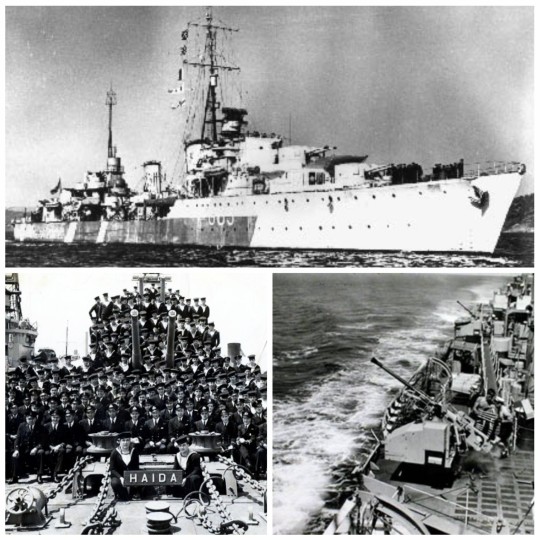
• HMCS Haida
HMCS Haida is a Tribal-class destroyer that served in the Royal Canadian Navy (RCN) from 1943 to 1963, participating in World War II and the Korean War. She was named for the Haida people.
The Tribals were designed to fight heavily armed destroyers of other navies, such as the Japanese Fubuki class. Canada chose the design based on its armament, with the size and power of the Tribal class allowing them to act more like small cruisers than as fleet destroyers. Haida was among the first batch of Tribal-class destroyers ordered by the RCN in 1940–1941. They were ordered with modified ventilation and heating systems for North Atlantic winter service. Haida's design was modified after deficiencies were noted in the lead ship of the Canadian Tribals, HMCS Iroquois. Haida, as one of the British-built Tribal-class destroyers, was 335 feet 6 inches (102.26 m) long between perpendiculars and 377 feet (115 m) long overall with a beam of 36 feet 6 inches (11.13 m) and a draught of 13 feet (4.0 m). As built, the destroyer displaced 1,927 long tons (1,958 t) standard and 2,745 long tons (2,789 t) at deep load. Haida had a complement of 14 officers and 245 ratings. As built, Haida was fitted with six quick-firing 4.7-inch (119 mm) Mk XII guns placed in three twin turrets. For secondary anti-aircraft armament, the destroyer was equipped with four single-mounted 2-pounder "pom-pom" guns. The vessel was also fitted with four 21-inch (533 mm) torpedo tubes for Mk IX torpedoes.
Haida's keel was laid down by Vickers-Armstrongs, Ltd. at their shipyard in Newcastle-upon-Tyne on September 29th, 1941. The destroyer was launched on August 25th, 1942 and commissioned into RCN service on August 30th, 1943. She underwent workups under her first commanding officer, H.G. DeWolf before reporting to the British Home Fleet at Scapa Flow in October 1943. After commissioning Haida was assigned to the Royal Navy's Home Fleet. On November 28th Haida was among the destroyer escort for the Russian convoy RA 54B, protecting it until it reached Loch Ewe on December 9th without loss. The convoy JW 55B sailed from Loch Ewe for Russia on December 20th. Haida was a member of its ocean escort. The German battleship Scharnhorst was deployed to intercept the convoy. While the cruisers escorting the convoy kept the German vessel at bay, Haida and the other escorting destroyers shepherded the convoy away from danger until the German battleship was sunk by a British force. Haida joined the escort of RA 55B on the return journey to the UK which sailed from Kola Inlet on December 31st and arrived on January 8th, 1944. On January 10th, 1944, she was reassigned to the 10th Destroyer Flotilla at Plymouth and took part in the Operation Tunnel and Operation Hostile sweeps in the Bay of Biscay and along the French coast of the English Channel.
By April, Haida had sailed on nineteen of the Operation Tunnel/Hostile missions. Haida continued the Operation Hostile sorties in company of sister ship Huron during the weeks leading up to Operation Overlord. The 10th Destroyer Flotilla were part of the covering force for surface attacks at the western entrance of the English Channel during the invasion of Normandy. On June 9th, Haida was part of Task Force 26 which engaged the German 8th Destroyer Flotilla, comprising Z32, Z24, ZH1 and T24 northwest of the Île de Bas. Following the fall of Cherboug, the German E-boats were transferred to Le Havre, freeing up the 10th Flotilla. The flotilla was then given the dual role of covering Allied motor torpedo boat flotillas and search and sink missions against German shipping along the French coast. On June 24th, while on patrol in the English Channel off Land's End, investigated a Liberator bomber dropping depth charges on a target. Haida and the British destroyer Eskimo began their own depth charge attacks after being informed that a submarine had been spotted. After several attacks, the submarine surfaced and attempted to run. Haida and Eskimo began to fire with all their guns and sank U-971. Haida rescued six survivors of the sunken submarine. On August 5th, Haida was part of a force engaged in an Operation Kinetic sweep. The force attacked a German convoy north of the Île de Yeu and sank the minesweepers M 263 and M 486, the patrol boat V 414 and the coastal launch Otto. During the battle a shell exploded in one of Haida's turrets and started a fire, killing two and injuring eight, knocking the turret out of action. Staying in the line of battle, the destroyers were engaged by shore batteries when they attempted to take on a second convoy and were forced to withdraw without doing much damage to the German merchant vessels.
Haida departed Western Europe on September 22nd for Halifax, Nova Scotia, arriving on September 29th. The destroyer returned to Scapa Flow in mid-January 1945 after refitting to receive new radar. In March Haida escorted aircraft carriers in minelaying operations off Granesund, Norway and assisted in attacks on shipping off Trondheim from March 24th-28th. On April 7th, Haida escorted seven anti-submarine warfare vessels from Greenock, Scotland destined for Soviet use at Vaenga, on the Kola Inlet. Haida experienced one of the last RCN engagements of the Second World War when she escorted convoy RA 66 from Vaenga from April 29th to May 2nd. The convoy was attacked in transit and Haida and Huron received near-misses from torpedoes fired by U-boats. In the skirmish, two U-boats were sunk, along with the frigate Goodall, and the convoy escaped in a snowstorm. Haida and Huron returned to Scapa Flow on 6 May and were assigned to relief operations at Trondheimsfjord, Norway on May 17th. Haida, along with Huron and Iroquois, left for Halifax in June to refit as part of Canada's contribution to Operation Downfall. They arrived on June 10th and Haida started a tropicalization refit but it was suspended after the surrender of Japan later that summer.
After the war, Haida was in inactive reserve for approximately one year but was prepared for reactivation in 1947 and underwent a refit for updated armament and sensors. This involved replacing the main armament, with the 4.7-inch guns removed and two twin Mk XVI 4-inch gun mounts installed forward and a twin 3-inch (76 mm)/50 calibre gun mount installed aft. Haida and her sister ship HMCS Nootka participated in exercises between the RCN's Atlantic Fleet and the United States Navy and Royal Navy over the next several years and were the first RCN ships to penetrate Hudson Bay in Fall 1948. Haida was involved in assisting during the grounding of the aircraft carrier HMCS Magnificent off Port Mouton, Nova Scotia on June 4th, 1949. In November 1949, Haida rescued the 18 members of the crew of a United States Air Force B-29 bomber that crashed in the Atlantic Ocean. The opening of the Korean War on June 25th, 1950 saw Haida once again activated for war duty. She was converted to a destroyer escort and began refit in July 1950 which saw various new armaments and sensors and communications systems. Following the Korean operations, Haida embarked on Cold War anti-submarine warfare duties with other NATO units in the North Atlantic and West Indies.
In 2002, at the urging of Hamilton, Ontario MP Sheila Copps, Parks Canada purchased Haida from the provincial government and towed her (with great difficulty) from her Ontario Place dock to a shipyard at Port Weller for a $5 million refit to her hull. She was taken to a new home on the Hamilton waterfront and arrived to an 11-gun salute from 31 Royal Canadian Sea Cadet Corps Lion and her 12-pounder naval field gun on August 30th, 2003, the 60th anniversary of her commissioning into the RCN.
#ww2#world war 2#world war ii#second world war#royal canadian navy#canadian history#history#british history#long post#british commonwealth#wwii
28 notes
·
View notes
Text
Looking it up and the QF 13-Pounder and QF 18-pounder field guns were still in use in 1938/39, so I could use that for some artillery support in my VBCW games, though finding a good period appropriate crew is a tad bit hard.
1st Corps has two good sets of crew, a 4 man and a 6 man sized crew, but I think that using the crews for the 6 Pounder gun would probably be the best fit. The shell used in the 17 Pounder is too pointy.
2 notes
·
View notes
Text
📚 FWH - Webb/Monro Letters
Throughout the siege, there were a number of letters sent between Lieutenant Colonel George Monro, the commander at FWH, and General Daniel Webb, the overall commander of the New York frontier area who had his headquarters at Fort Edward. The contents of these letters are mostly about updates and the planned courses of action for the siege, a task complicated by the fact that a couple of letters coming in from Webb got intercepted by Montcalm.
I’ve found the transcriptions of all of Webb’s letters and a few of Monro’s from this research paper on FWH someone did here and a collection of the letters of George Bartman, Webb’s aide-de-camp who managed his correspondence.
✉️ Webb→Monro (4 letters)
① Dated Aug 3 (written at 16:30, received by Monro later in the evening)
Sir
Your letter Genl. Webb receiv’d by the two Rangers of Rogers’s Company about one o'clock. we have just fir’d the two minute Guns repeated each quarter of an hour to shew you we knew your situation; but as for determining any further the General cannot till he has inner particular intelliegence from you, which he desires you will take every opportunity of giving him. The signals would have been answer’d early in the morning, but that nobody who heard them could give a proper account how they were fir’d, and soon after they became promiscuous. Six Rangers were sent off to you to enquire into your situation, and acquaint us therewith, and whether the communication was cutt off between the two Forts. The General doubts not but every thing will be done for the best on yours and Colonel Youngs part, and is determin’d to assist you as soon as possible with the whole army if requir’d. We have as yet no Alarums here from the Enemy. This goes by three of Putnams Rangers with orders to destroy it if likely to be taken.
I am Sir, with most sincere wishes for your safety till we can come to your assistance, G. Bartman
Aid de Camp
② Dated Aug 4 (intercepted by the French; received on the evening of Aug 7 from Montcalm)
Sir,
I am directed by general Webb to acknowledge the Receipt of three of your Letters, two bearing date about Nine yesterday Morning, and one about six in the Evening by two Rangers, which are the only Men that have got in here, except two yesterday with your first, acquainting him of the Enemy in Sight. He has order’d Me to acquaint you, he does not think it prudent (As you know his Strength at this place) to attempt a Junction or to assist you till reinforc’d by the Militia of the Colonies, for the immediate March of repeated Expresses have been sent. One of our Scouts brought in a Canadian Prisoner last night from the Investing Party which is very large, & have possess’d all the Grounds five miles on this side of Fort Wm Henry. The number of Enemy is very Considerable, the Prisoner says eleven Thousand and have a Large train of Artillery with Mortars and were to open their Batteries this day. The General thought proper to give you this intelligence, that in Case he should be so unfortunate from the delays of the Militia not to have it in his Power to give you timely Assistance, you might be able to make the best Terms were left in your power. The Bearer is Serjeant of the Connecticut Forces and if is happy Enough to get in, will bring advices from you. We keep Continual Scouts going, to endeavor to get in, or bring intelligence from you.
I am &cc. G. Bartman
Aid de Camp
③ Dated 6th Aug (late arrival; received 8 or 9 PM of Aug 9 from ally ranger, after surrender)
Sir
Yours of this morning 6 oclock we have receiv’d and I am directed by General Webb to acquaint you that as we have now got together by the March of the Militia in the highest spirits three Armies of five thousand Men in different parts of the Woods he shall set out in the night with the whole join’d together, and make no doubt of cutting the Enemy entirely off.
I am, Dear Sir, till I have the pleasure of seeing you to partake of the Victory, G. Bartman
Aid de Camp
[P.S.] We shall bring a Field Train.
The Bearer if pursued is indeed to make away with the Letter.
④ Dated 8th Aug (received from Montcalm at 6 PM on Aug 9 after surrender)
Sir:
I am directed by General Webb to acquaint you, that it is entirely owing to the delay of the Militia that he has not yet mov’d up to your Assistance, but as he had now got a party of them and Expects a thousand more tomorrow, you may depend, upon their arrival, that he will not fail to March to your Assistance; you will upon hearing him engag’d consult with Col. Young how you can by making a vigorous Sally from Camp best support his attack. We have sent repeated Letters but are sorry only one has got in, tho we hope none have fallen into the Enemys hands, as most of the Parties have returned but were all closely pursued. We shall have about an hundred & fifty Indians with Sir Wm. Johnson, but shall keep them nigh as to prevent any Mistake. We wish most heartily that you may be able to hold out a little longer, and hope to have it in our power to relieve you from your present disagreeable Situation, tho we are inform’d by a Prisoner we took the first Evening of the Enemy’s landing, that they are eleven Thousand strong. On the receipt of this, the General desires you will send off several Expresses to acquaint him thereof, likewise what you judge the Enemys Numbers to be, and how long you think, you could hold out against the present Cannonading.
I am &cc.
G. Bartman
Aid de Camp
✉️ Monro→Webb (7 letters surviving, at least 1 more lost)
① Dated Aug 3
② “ Aug 3
③ ” Aug 3
④ “ Aug 4
⑤ ” Aug 6 (reached Webb in the morning, detailing loss of cannons)
⑥ “ Aug 6 (reached Webb shortly after letter ⑤, similar content)
Sir.
As a Proof of the Insufficiency of the Artillery, We have had within 24 hours, two 18 pounders, one 12 pounder and one Mortar burst, from which you will see the necessity of sending up a fresh supply of Artillery as soon as possible. We have been obliged to give two 12 pounders from the Camp, which we cou’d very ill spare. In case my Letter of this Morning shou’d not have reached you, I am to repeat to you, that the Enemy are plaging upon us from a Battery of Nine pieces of Cannon mostly 18 & 12 pounders.
I am &c.
Geo. Monro
⑦ Dated Aug 6 (last letter of the day, reached Webb in the evening)
Sir.
This is the third Letter I wrote to You today: In my two former I acquainted you with the situation We were then in; Since that time, there is another gun in the Fort rendered useless by the Enemys’ fire: and We have discovered New Works carrying on, Which we believe will be Completed this evening or tomorrow morning, which will bear equally the Fort and upon the Camp. I beg pardon for Saying, that if reinforcement, We had reason to Expect from your Letter, the only one I have ever received from You, which bears the date of Augt. 3d/ had arrived in time, our situation would probably have been better. About two o'clock this day I received from you a Verbal Message from two Rangers, mentioning an Expectation You had of being Joined by Sir Wm. Johnson and some Indians; as they delivered it in so Confused a Manner, I really cou’d not rightly understand it. I have as frequently as possible acquainted You with every Circumstance that has passed since the Enemy’s appearance, and therefore Submit the Whole to your better Judgement. In my former Letters of this day, I told you there were four Cannon burst in the Fort within 24 hours and likewise that I had made a request of a fresh supply of Artillery having sent into the Fort two 12 pounders which We cou’d spare very ill from this Camp.
I am &c.
Geo. Monro
⑧ Dated morning of Aug 8
Sir,
The Fort and Camp will hold out in hopes of the speedy Relief from You, which We hourly Expect, and if that does not happen, We must fall into the hands of our Enemies. Your letter dated 4th instant was delivered to me by an Aid de Camp of General Montcalm’s; that letter falling into his hands was a very unhappy thing and has to be sure, elevated him greatly. As to the Numbers of the Enemy, the Canadian prisoner mentioned to you, every body here is of the opinion that was greatly Magnify’d. If they really had those Numbers, they might have demolished us at once, with out Loss of time. The Enemy are Constantly playing upon us from two heavy batteries of Nine pieces Cannon Each. Relief is greatly wanted.
I am, &c.
Geo. Monro
#⟪Research 📚⟫#⟪✠ Honour and Loyalty ✠⟫#supplementary material for the FWH timeline#That is a lot of letters flying out from FWH 👀
9 notes
·
View notes
Photo
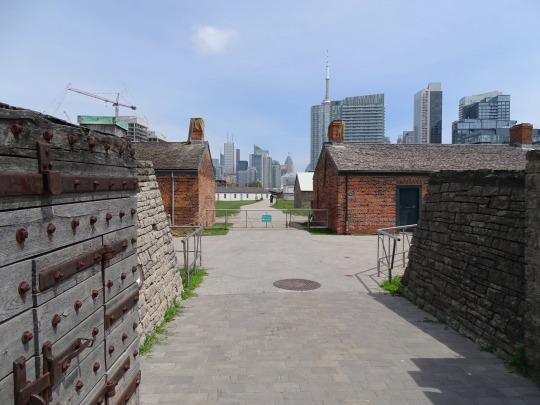
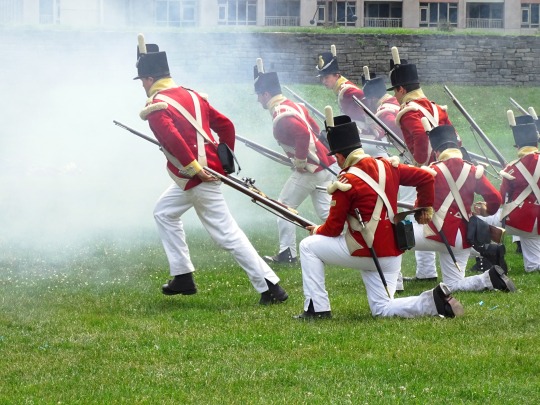
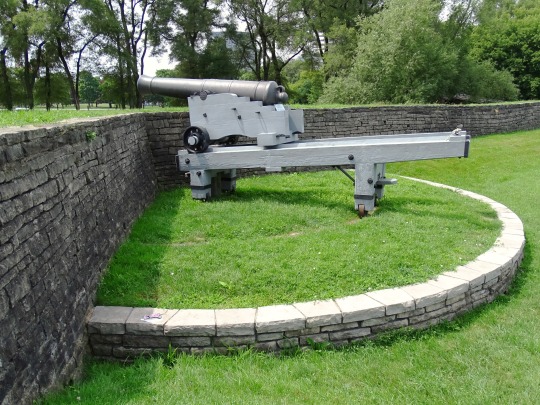

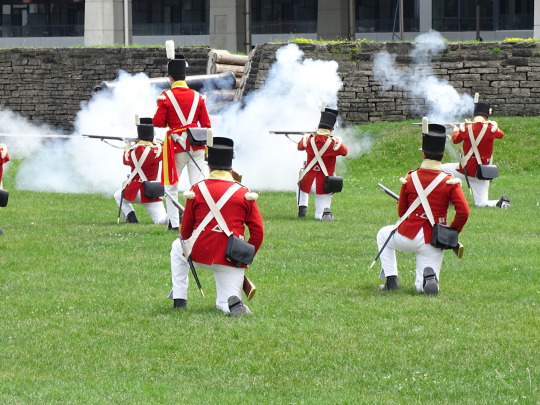
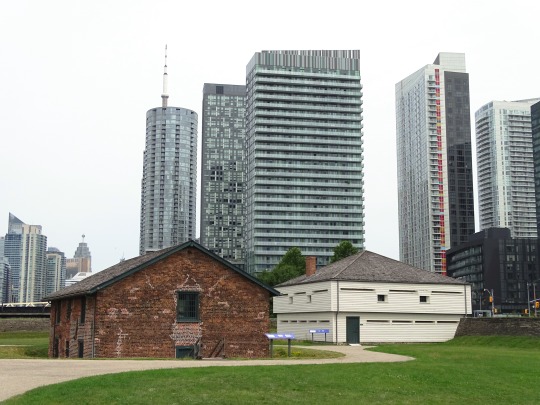
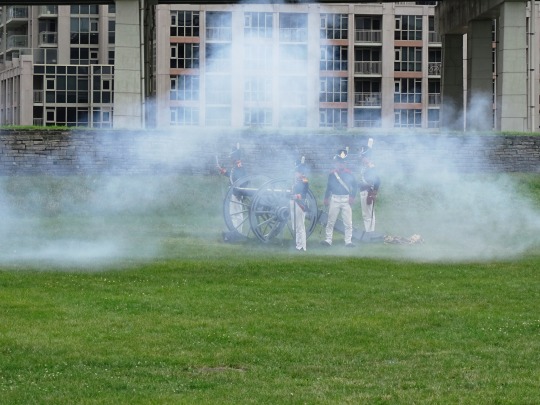

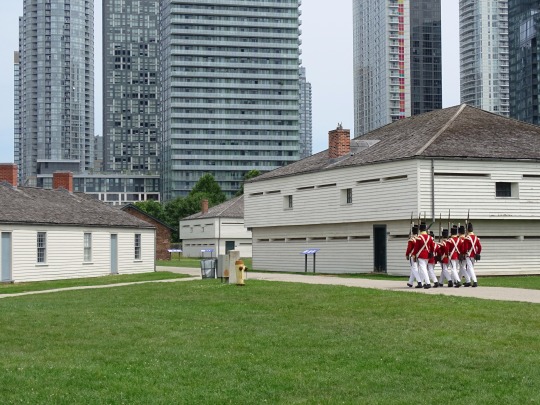

War of 1812: American troops captured York, the capital of Upper Canada, in the Battle of York on April 27, 1813.
#War of 1812#York#captured#Battle of York#27 April 1813#anniversary#US troops#military history#original photography#Toronto#Ontario#Canada#travel#Fort York National Historic Site#cannon#historical reenactment#Canadian Regiment of Fencible Infantry#Fort York Guard Royal Artillery#musketmen#6-pounder field gun#cityscape#architecture#tourist attraction#museum#summer 2018#vacation#uniform
1 note
·
View note
Photo


The Alamo began as an Eighteenth-century mission in San Antonio Texas. The Alamo became the place of a historic siege of a group of Texans by a Mexican army during the Texas war for independence from Mexico. Occupied by Spanish troops, the abandoned mission was named Alamo due to surrounding trees. In December 1835, at the beginning of the war, volunteers occupied the Alamo and vowed to fight to the death at any attempt to recapture it. A Mexican army of several thousand began a siege that lasted 13 days, in February 1836. Led by Jim Bowie and included Davy Crocket, the Texan force of about 180, was overrun. Nearly all the defenders were killed. Mexican casualties were at least 600. "Remember the Alamo" became a rallying cry for Texans through the remainder of the war and stood as a reminder of the brave and honorable men who stood against all odds and fought to the last man.
The 1835-36 Texas Revolution began as shots were fired over a cannon that had been given to the town of Gonzales for protection against Indians. As the rebellion progressed, the Texians were hard pressed to find ordnance and found it even harder to transport. Subsequently, the reluctance to abandon such a precious commodity played an important role in the decision to remain at the Alamo. At Goliad, Fannin's men may have all died because Fannin was hesitant to abandon his artillery. At San Jacinto holding on to the "Twin Sisters" cannon played a significant role in the Mexican defeat.
During this period "cannon" refered to the barrel of the gun. The entire gun was known as a "piece of ordnance". Cannon were made of either iron, brass or bronze. These materials became designations that were used to denote the material of which a cannon was made. A cannon was classified by the size of the projectile it fired. For example, a six-pound cannon fired a six-pound ball. In 1830's Texas artillery fell into one of four classifications:
Guns that fired shot or shell over long distances.
Carronades were shorter barreled, lighter pieces that could fire at higher elevations. These were used defensively and on ocean going vessels.
Howitzers were short barreled weapons that could be fired at steep angles or horizontally.
Mortars had short stout barrels that fired an exploding canister shell. This canister shell could be lobbed over the defensive works of an enemy.
Guns were mounted on carriages to fitted for a specific duty. These usually fell into one of three categories.
Garrison carriages were used in permanent locations where weight was not a factor. These could be made of either wood or iron.
Siege carriages usually made of wood were used to hold heavy siege guns.
Field carriages were light weight wooden carriages designed for mobility.
The cannon of the Alamo were probably mounted on field carriages. There is some evidence that a few pieces, such as the iron 12 pound gunade, were mounted on garrison carriages. A
gunade
appears as a combination of a cannon and a carronade and was sometime used on merchant ships of the time to meet insurance requirements. How this particular specimen ended up 150 miles inland is another of the Alamo's many mysteries.
In 1836, artillery was loaded and fired in a fashion similar to the rifles and muskets of the day.
First, a pre-measured amount of powder was shoved down the barrel. Wadding was then stuffed into the barrel and packed on top of the powder before inserting the chosen projectile. The cannon was then primed by pouring powder into the touchhole on top of the barrel. Firing was accomplished by touching off the priming powder with a slowmatch that was held on a long rod called a "linstock".
Projectiles could be solid shot (cannon ball), exploding shell, grape shot, cannister or even scrap metal such as nails, horse shoes and chains that had been chopped to pieces. This method turned a cannon into a very effective scatter gun. The devastation that these jagged pieces of scrap inflicted must have been terrible and horrifying, unlike anything the Mexican soldados had faced before.
Based on recent research, we know that they faced 18 cannon of various sizes consisting of: the famous 18 pounder, one iron 16 pounder, one iron 12 pound gunnade, one 9" pedrero, two iron 8- pounders, six 6-pounders, three iron 4- pounders, another 4-pounder of either brass or bronze and two 3-pounders.
As with everything associated with the Alamo, the exact placement and type of artillery pieces is subject to debate. Most Alamo researchers/authors agree that there were:
3 guns in the chapel mounted on the ramp
1 to 4 guns in the palisades area
1 to 2 guns at the northwest corner
2 to 3 guns on the north wall
2 cannon in the lunette guarding the main gate
2 cannon redoubt facing the main gate
1 cannon in the cattle pen
1 to 2 cannon in the horse corral, firing either over or through the west wall
1 18-pounder in the southwest corner.
2 notes
·
View notes
Text
hc: rns terror. The RNS Terror was originally the historic HMS Sulphur, a Hecla-class bomb vessel of the British Royal Navy whose construction was completed on February of 1826. She was small at approximately 105ft in length and 372 tons, could hold up to a 65-man crew, had a sluggish top speed of about five knots, and without any steam engine, was fully-rigged with three massive masts, her sails like sheets of clouds billowing over the seas. With two 6-pounder cannons, ten 24-pounder carronades, one 10-inch mortar, and one 13-inch mortar spread over, she may have been no warship behemoth, but if push came to shove? She was ready to open fire.
Unfortunately, though, Sulphur was decommissioned. Broken apart in 1857. For the purpose of this story, however, she survived and was later converted into a museum, docked, intentionally forever, in the HMNB Portsmouth.
But she wasn't to stay forever.
After the bloody Resource Wars and, eventually, the detonation of the bombs, many of the functioning warships were lost, most decimated by naval battle or never to be seen again when the nukes fell. The majority of the relics of ships stayed, though. Sulphur, included. Post-war Portsmouth reinstated her, refitted her, and somewhere between 2077 to 2260, she was back patrolling the English strait from looters, invaders, and pirates; protecting home and country; fishing for much needed food; and raining hell on her enemies. Yet, she was not the same old Sulphur.
When she was converted to a museum, her armaments were swapped out due to safety regulations. Today, she is again armed to the teeth with almost double the mortars, guns, and cannonades, and even improved with a built-in steam engine that allows her to sail at nine knots, some dish and radios for communication, and now --- the Holy Grail, perhaps --- a “state-of-the-art” (by English standards since they did not harness nuclear power and fission the way America did) laser cannon. Sure, she may be no USS Constitution with her unfathomable football-field-sized rockets, but she isn’t the same sailing-turned-survey ship from the 1800s. In 2283, when the mission to sail for America was declared, she was officially renamed to Terror --- a nod to the lost crew of the Franklin Expedition, and a promise to bring success and honor back to the name.
Andrew Alexander Corrigan was to be her captain. And the second Age of Sail, of sorts, had begun.
OUTSIDE
Now, to the pictures! I’m starting off with the outside view:
Three masts
Dark/black finish
This is a model kit, but visually and historically accurate. Check it out here!
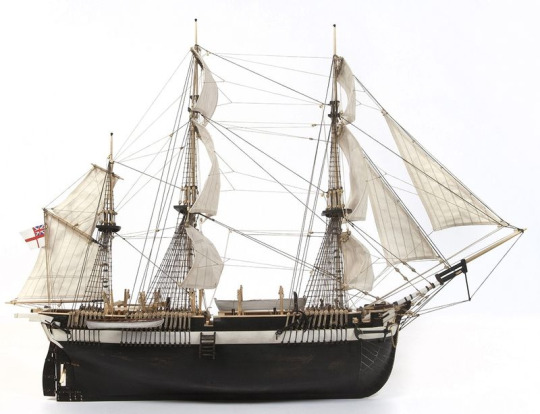
Below is the Terror from a quarterdeck view. Note the ship’s wheel.

Here is the stern, or back, of the ship with a screenshot from the AMC series. All Hecla-class bomb vessels shared this similar look. Of course, instead of Erebus, we would see Terror.
I should also mention the Terror is not as massive as one might think --- not like today’s cruise ships or anything. I only use words like “massive” because it may seem large to a man, but in comparison to others, it isn’t. The two pictures below, one of the stern (back) and bow (front), can give you a frame of reference as to the size of the ship versus a grown person.


INSIDE
Below the upper deck (outside), we have the lower deck, the orlop deck, and hold. The captain’s quarters is where the windows above are, so the lower deck. Men usually sleep on the lower deck as well. Sickbay is located at the orlop, as well as mess hall, and the hold is where the steam engine, coal, and stores are located.
The captain’s quarters.

In Corrigan’s quarters, the table is set off to the left side and strung by ropes to prevent sliding.

The captain’s berth. Small. This small room is almost cupboard-sized and, naturally, attached to the captain's quarters, sectioned off by a sliding door.
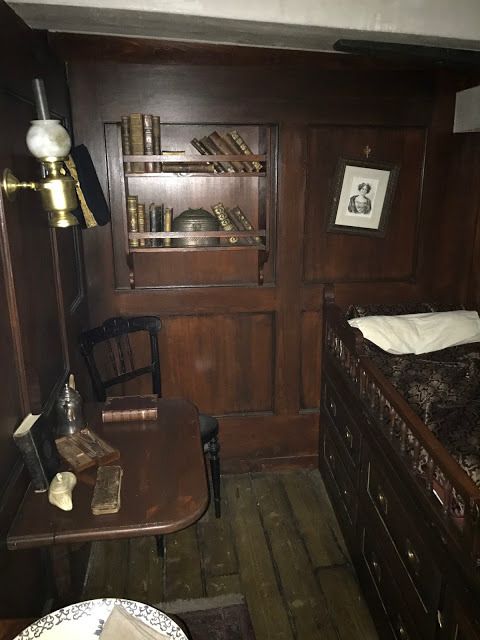
Non-commissioned officers sleep in hammocks such as these. This is from the HMS Victory. The space is much larger than Terror’s, which is a much smaller ship.
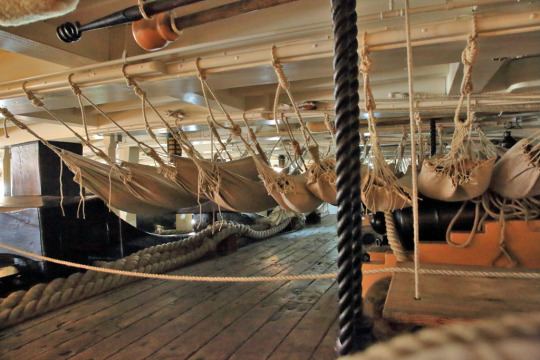
The wardroom, below, is where commissioned officers gather to dine. I wish I had a photo of just the set, but this will suffice. It’s a cramped area and could squeeze up to nine at the table with two, usually the captains’ stewards, standing to the side.
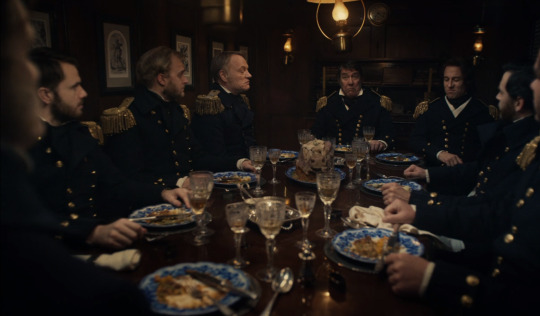

Sickbay. Many vials and medicine are stored in cabinets or on shelves. With rough sailing, these could easily knock over. Other cots and hammocks are here, too, to accomodate more than one ill seaman.

Credit: Many photos were taken here and screencapped from the series
Hope this proves helpful for some of you who haven’t seen the show! I chose the Hecla HMS Sulphur because it was the same class as the HMS Erebus, which shares a lot of visual similarities with the HMS Terror, and thus, Corrigan’s Terror. As evident from this entire blog, I tried to emulate The Terror as much as I could with elements from history. :^)
#( corragain: hc )#[it occurred to me you guys might not know what the terror looks like? so here's my guide!#scroll to the bottom for visuals. the top portion paragraphs explain more of her history and armaments for the postwar age.]
2 notes
·
View notes
Photo
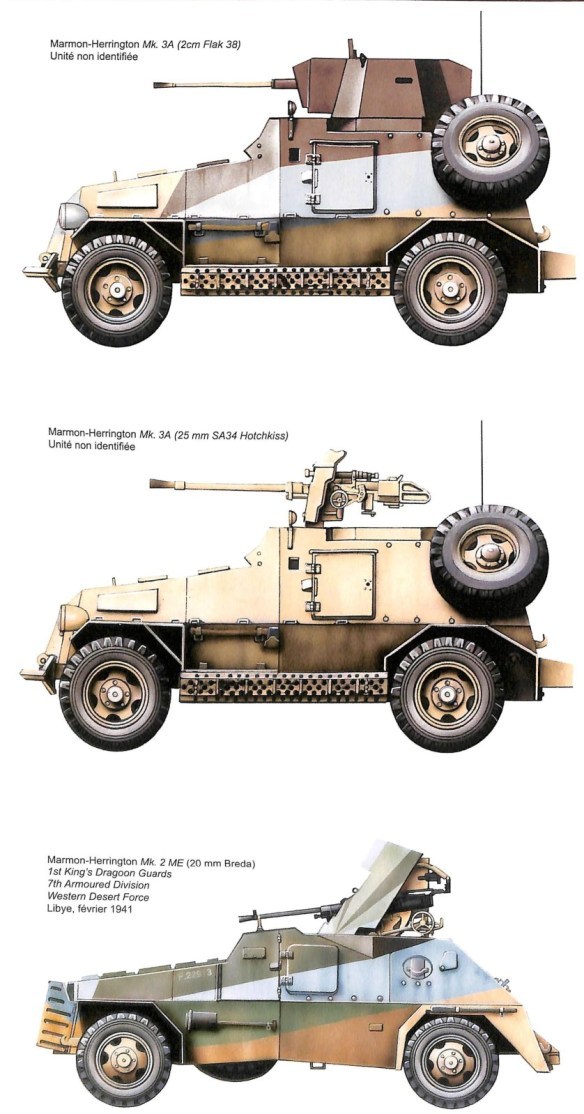

British Anti-tank guns in the Desert
The portee of guns is a pretty basic and, generally, an ad hoc technique. While it was often used in NA owing to the need for longer ranged mobility and lack of concealed gun positions, the British did use it in Europe.
The first British portee weapons in WWII occurred in France in 1940. They were augmenting their 2-pdr AT guns with French 25mm guns. They were so flimsy that high-speed cross-country towing was impossible so they were carried by lorries.
Starting in 1941, the British developed the “en portee” method of mounting an anti-tank gun (initially a 2 pounder) on a truck. This was to prevent the weapon from being damaged by long-distance towing across rough, stony deserts, and it was intended only to be a carrying method, with the gun unloaded for firing. However, crews tended to fire their weapons from their vehicles for the mobility this method provided, with consequent casualties. This undoubtedly inspired their Morris C9/B (officially the “Carrier, SP, 4×4, 40 mm AA”), a Bofors 40 mm AA gun mounted on a chassis derived from the Morris “Quad” Field Artillery Tractor truck. Similar types, based on 3-ton lorries, were produced in Britain, Canada and Australia, and together formed the most numerous self-propelled AA guns in British service.
Lorry-mounted 2-pdr anti-tank guns on a practice shoot in the Western Desert. 3 May 1942.The 2-pdr antitank gun equipped RA anti-tank regiments and later infantry battalions for much of the Desert War. This 10mm-calibre weapon was mounted on an ingenious three-legged carriage, giving it a low profile and which allowed the travelling wheels to be lifted clear of the ground so that the gun could easily traverse through 360 degrees. An armoured shield fined with an ammunition box protected its 5-man detachment and it weighed 1,760 lb. in action. Many were carried portee on the back of lorries during the Desert War. but when used this way often proved vulnerable to both small arms and shrapnel. Firing a solid AP round and with a penetration of ’40mm at I,000m, the 2-pdr was highly effective against lightly armoured cars and tanks, but as the Desert War progressed it was quickly outclassed and could only engage with a hope of success from the flank at close range.
The 2-pounder was given a new lease of life by putting it on a lorry-the Portee mounting. This mounting used a 15cwt truck with the sides taken off the back so that it had a flat bed. Using two long ramps a 2-pounder was hauled up and set down on its platform. The wheels were removed and bolted on the sides of the truck. The gun could be fired from the flat bed or it could be unloaded and emplaced. By reversing the truck up to the emplacement and throwing down the ramps, it could be evacuated quite quickly, although it could not be done with safety by daylight. The idea gave the little 2-pounders some much-needed mobility and the Portee gunners soon evolved a technique in which they lay up behind a low mound with only the top of the shield and the barrel emerging round the side of the cover. This was safe enough until the tank moved to a flank whereupon the unfortunate truck began to catch the shot and the gun had to move. One anti-tank regiment lost almost a complete battery in one day early in 1942. When the first of the 6-pounders arrived, they too were mounted as Portees, though they were getting a little heavy for continuously pulling up and down the ramps.

5 CWT truck with Breda 20/65
During WW II Canada produced well over 850.000 military motor vehicles which includes one of the most widely used types: the 4 x 2 type Chevrolet 15 CWT. This vehicle was the backbone of the Australian, British and Canadian Forces but was also supplied to many of the other Allies including the Soviet Union, China and India. The truck was used or transporting troops, ammunition and other war material. The design was based on a British Army design and the vehicle was built by General Motors of Canada as well as in Australia. The engines were also supplied through American manufacturers.

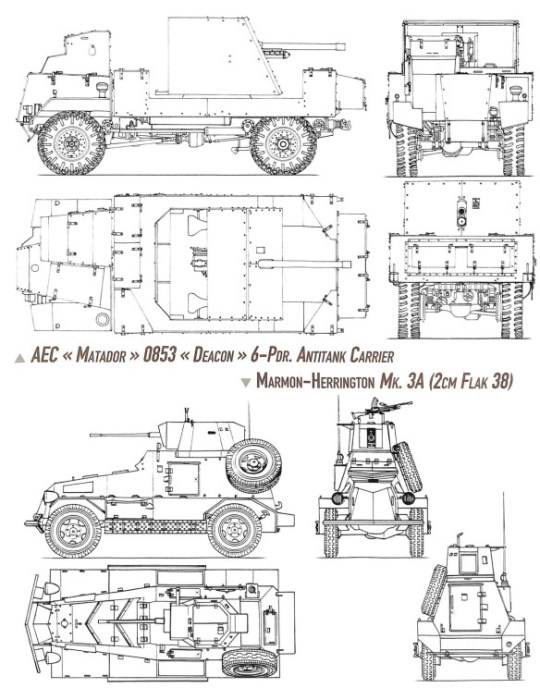
BEDFORD QL with 6 PDR.AT GUN
In 1939 the British War Office placed an order with VAUXHALL MOTORS Ltd of Luton, a British subsidiary of General Motors to design a 3-ton 4×4 truck chassis which would form the basis for various vehicles. Originally this vehicle was built for the transport of 6-pound-guns type M-1 and therefore it was also called Gun-Portee. The gun was placed on the platform of the truck and thus it could not be identified. Thus the Bedford QL truck was created and from 1941 until 1945 a total of 52,245 chassis were produced. The QL was an excellent vehicle and soon became the most numerous tactical 3-tonner of the British armed forces. These models were used on almost all fronts during the Second World War and later served in Korea and the Middle East. In the British forces it was gradually replaced by the model RL.
#
It is important to note that in any battle a significant proportion of the AT fire suffered by British tanks did not come from other tanks at all, as perhaps British tacticians liked to assume, but from towed (ground-mounted) AT guns. The German 5cm gun was particularly potent, and their famous 8.8cm Flak gun even more so, although it was available in far smaller numbers. British tank crews often imagined that they were being hit by tank fire when in fact they were being hit by something much more serious; the literature is crammed with examples of this misconception. This led them to make a false comparison between the supposed power of the Axis tank guns and the perceived weakness of their own – which in turn reinforced the British belief that they did not particularly need to fire HE shells at the enemy. High explosive was not a good weapon against tanks, but was ideal against AT guns. Since the British doctrinal mindset was pre-occupied with tanks fighting other tanks, it simply did not take account of the need to shell AT guns with HE – in diametrical opposition to the German perception of what was needed.
The British believed that they themselves possessed an adequate antitank defence, although it was split into five distinct and different elements. The first was the infantry platoon’s 0.55in Boys AT rifle, which could be useful against very light armour, or sometimes against the flank or rear of heavier tanks, but for nothing much else. The next were the 2-pdr guns fitted on tanks, and the ballistically identical 2-pdr towed guns on ground mountings or portee vehicle mounts. While these guns were recognized as being the best in their category, by 1942 that whole category had become practically obsolete. The fourth prop of British AT defences was provided by the Bofors 40mm quick-firing AA gun, which in practice did some good service with AP shells, but was not often available at the key time or place. Finally and most importantly, there was the incomparable 25-pdr gun-howitzer. This was in fact almost precisely an 8.8cm weapon, although its muzzle velocity was considerably lower than that of the 8.8cm Flak. There were many occasions on which 25-pdrs in the AT role did succeed in beating off the Panzers. A major disadvantage, of course, was that as long as they were firing AP ammunition they could not be firing HE; their dual role thus served to reduce the availability of HE to the British in a ‘tank battle’ still further.
A sixth potential British AT weapon was the 3.7in (92mm) AA gun, which was ballistically better than the German 8.8cm Flak. The question has often been asked why it was not widely used in the same way, to which the answers are many and complicated. There were problems with sights – of which three different types were tried before an effective AT sight was developed – and with the production of AP ammunition. It took about ten minutes to remove the wheels and unfold the static firing platform; and the sheer height of the beast, which did not have a gunshield, made it a more vulnerable target than its German equivalent (although firing both guns kicked up a 100-foot dust cloud). There were also ‘political’ pressures for it to be kept nearer to the Army, Navy and RAF rear base areas than to the front line where it might encounter Panzers. All of these difficulties had been solved in theory by the summer of 1942 (notably by the energetic efforts of Brig Percy Calvert, commander of the 4th Heavy Anti-Aircraft Bde), but with very few exceptions the 3.7in was still not used against tanks.
It is hard to avoid the conclusion that this was ultimately because British doctrine saw all AT guns as defensive and static weapons, and therefore not really appropriate to take part in a mobile tank battle. If friendly tanks were defeated and forced to fall back upon their AT guns, then all well and good; but pushing the guns forward to accompany an armoured thrust somehow went against the grain. The Germans, by contrast, regarded the deployment of AT guns – including even the heaviest – as an integral part of all tank movements, in the advance no less than the retreat.
https://weaponsandwarfare.com/2018/05/31/british-anti-tank-guns-in-the-desert/
2 notes
·
View notes
Text
Weapons at sea - Cannons
In ancient times ramming spurs were used on the hulls of ships to attack enemy ships. As the ships grew larger and heavier and the ram spur became less important, the ships were equipped with centrifugal devices, so that stone balls and arrow projectiles could be launched in the direction of the enemy. The Byzantines developed the so-called Greek fire as a special offensive weapon, which sprayed a burning liquid over a certain distance by means of a bundled jet. So-called fire lances have been used on Chinese warships since their first development in the 11th century. At that time, these handguns were initially still made of bamboo cane.
Despite these weapons, naval battles were fought mainly similar to land battles, i.e. in infantry man-to-man combat, where the ships served as floating battle platforms. Only with the invention of the black powder the fight was designed from man to man for the distance. In Europe cannons were common on ships since the 14th century. These were mainly weapons of small calibre, some of them breech loaders, as well as smaller colubrines, which were intended more for use against the crew than against the ship's hulls ('man-killers'). The first known use of ship guns took place in 1340 in the naval battle of Sluis. At that time there were galleys equipped with a gun at the bow (hunting cannons), but these ships were still intended for close combat by boarding.

The first heavier black powder guns to appear in the 15th century were bombards, which were varied and adapted to different functions over the following centuries. In the 15th century, the calibre of the cannons grew to such an extent that they could also be used effectively against the wooden side walls of the enemy ('ship-smashers'). In addition, more and more muzzle-loaders were used, which were cast from one piece of bronze and later iron.
Around the year 1500, gun ports were installed on sailing ships along the ship's hull, as the guns could no longer be placed high in the superstructures due to their higher weight. They fired over so-called piece ports in the broadside. In the beginning, the gun ports were still arranged directly above each other (for example in the Great Harry galleon of 1514) - it was only in the further development of the ship types that it was discovered that the so-called chessboard arrangement of the gates offered structural and tactical advantages. This development also led to the galley being replaced by the much more effective sailing warship. By the beginning of the 17th century, the development of muzzle-loading smoothbore artillery had been largely completed. The liner ships carried the majority of the guns on two or three continuous battery decks with the heaviest guns on the lowest deck. In the middle of the 17th century, according to English inventories, these were the so-called Cannons, Demi-cannons and Culverines, which fired 42, 32 and 18 pounds (19, 14.5 and 8.2 kg respectively) of heavy iron bullets. On the upper deck there were lighter cannons. Breech loaders existed only as small calibers or as outdated pieces.
The Muzzle Loader Cannon

A muzzle-loader gun is a thick-walled iron or bronze tube closed at the rear. The walls of a cannon tube are not even over the whole length, but reinforced in some places. The wall thickness of the ground field is greater, because the explosion of the propellant charge takes place inside the tube, the head frieze is a reinforcement, which should protect the muzzle of the tube from damage by the escaping explosive gasesThe shield pins cast horizontally onto the pipe are a little closer to the ground than to the head of the cannon. With its trunnions, the pipe is stored on the rapert or the gun carriage. The trunnions are mounted in such a way that the rear part of the gun is somewhat heavier, but should be balanced in such a way that the height direction can be changed with as little effort as possible.
The size of the calibre diameter is decisive for the proportioning of the cannons. The length of the barrel is measured by a certain number of calibre diameters, as are the wall thicknesses of the barrel or the diameters of the trunnions, etc.The bore of the tube is cylindrical and is called the "soul". In muzzle-loading cannons it was smooth until well into the 19th century, i.e. the barrel did not have any cut-in grooves that gave the projectile a twist, as had been known for some time with handguns. Of decisive importance for the firing accuracy of the cannon is the precise central position of the soul axis. The bore has a larger diameter than the projectile intended for the cannon. The difference is called "play". In the 18th century this was still comparatively large, which meant a reduction of the bullet velocity, because a larger part of the explosive gases escaped unused.
The term "muzzle-loader" results from the necessity to load pipes of the described form from the front, i.e. first to insert the propellant charge and then the projectile. The propellant charge is ignited through the ignition hole in the ground field, at the end of the soul.Some cannons and other guns have chambers. These are cylindrical or hemispherical receptacles for the propellant charge in the bottom of the gun. They have a smaller diameter than the soul bore
The smooth muzzle-loading cannon was the most important naval weapon until the middle of the 19th century. Although there were numerous gradual improvements, cannons and mountings were very similar from the 17th to the beginning of the 19th century. Already in the 17th century most of the ship cannons were made of cast iron, although this material had disadvantages for guns compared to bronze. Iron cannons needed somewhat larger wall thicknesses, so that they were heavier than corresponding cannons made of this material despite the higher density of bronze. Due to the brittleness of the material, iron cannons tended to crack, not to mention the corrosion, and iron is more difficult to drill than bronze. The decisive advantage of cast iron was its relatively low price. In the late 18th century, the price of a bronze cannon barrel was seven to eight times that of an iron cannon of the same calibre. At the end of the 17th century bronze cannons could only be found in the English navy on prestige ships such as liners of the 1st rank or royal yachts, but for cost reasons it was not possible to equip even the ships of the 1st rank completely with bronze tubes. 1717 there were in the British navy only on three ships of 1st rank bronze cannons. When in 1782 the Royal George (built 1756) sank, she was apparently the last ship of the Royal Navy with an extensive, but not complete equipment of bronze tubes. Her subbattery 42 pounds consisted of captured and bored French 36 pounds (because the French pound was heavier than the British pound, the calibre diameter was close to the British 42 pound). Contrary to some suppositions, the famous Victory of 1765 probably never had bronze cannons on board in its existence.
In the 18th century the Netherlands, Sweden and England were the centres of iron artillery casting. Although there were problems with quality in these countries at certain times, French iron guns remained notorious for being inferior in the long term. Major developments in gun-casting technology originated in England, so that Prussia, Russia and even France, among others, used British specialists to expand their capacities.Cannons were named after the weight of the iron full sphere which they fired. In the navies of the different nations similar cannon sizes developed, but the pounds were nationally different - a French 24-pounder shot a bigger, heavier bullet than a British 24-pounder.Common calibers in the 2nd half of the 18th century were:
Great Britain: 42, 32, 24, 18, 12, 9, 6, 4, 3 English pounds ball weight
France: 48, 36, 24, 18, 12, 8, 6, 4 French pounds
Sweden: 36, 24, 18, 12, 8, 6, 4, 3 Swedish pounds
Many calibres had two or three different tube lengths. The last British 42-pounders, which were set up in the subbatteries of first-rate triplane batteries, were replaced towards the end of the century by 32-pounders, which had been the most important liner gun for a long time, because of their sluggishness. Among the new French designs cast from 1787, there were no more 48-pounders. Still in 1780, however, some bronze 18-pounders and 48-pounders had been cast. The latter were intended as armament for two 110-cannon ships.At the other end of the scale disappeared up to the end of the 18th century still before the 4-pounder of the 3-pounders largely from the British ship armaments, although they were to be found on smaller, more irregular vehicles of the navy (rented) still after 1800. Lighter cannons on the superstructures, among which 6- or 9-pounders are to be counted, were often replaced after the distribution of the carronades by these with the same or lower weight of larger calibre guns.

The fields or pieces and sections of the pipe:
A-E: Long field ( Le troisième renfort, la volée).
B-C: Neck ( le collet).
F-H: Midfield, cone field ( Le deuxième renfort).
F-G: Belt ( la ceinture).
I-N: Ground field, chamber field ( Le premier renfort).
M: Vent field (Champ de lumiére).
Further parts
O-P: Cascable (Culasse).
P-Q: Grape (Bouton).
R: Vent patch.
S: Trunnions (Tourillons).
U: Muzzle (Bouche).
Munition
The most important type of munition was the full iron ball, which could be used equally against the hull, rigging and crew. Chain balls (two iron hemispheres connected by a short chain) or rod balls (so-called bars) (two iron balls connected by rods) were fired especially for use against the rigging. In addition, at short distances against the enemy crew, cartridges or hail were used, for example to defend against boarding. Although the range of the cannons was up to 2 km, the chances of hitting beyond a few hundred meters were extremely low. Around 1800, most commanders of the British Navy trained their guns to fire as fast as possible and tried to fire at a distance of a few 10 metres, making it virtually impossible to pass by. The combination of open fire, open gunpowder and the wooden ships with ropes and bad luck offered many occasions to lose the ships by fire or explosion. At very short combat distances, there was a danger for both sides that the muzzle flash and the loading plugs would first catch the enemy and then their own ship on fire. The jump back of the pipes during firing was another danger potential on the decks overfilled with humans. The artillery of a sail warship was normally able to penetrate the side walls of a comparable enemy at short distances. Due to the small size of the cannons, however, it was difficult to sink an opponent of the same size. The effect of the cannons was particularly directed when shooting into the fuselage against the enemy armament and crew, with which the majority of the losses resulted from splinters of wood. By the loss of masts or rigging a ship could be shot maneuvering incapable. In many single fights, i.e. in fights far away from the great sea battles, the commander of a ship was anyway careful with relative caution, as a capsized ship including captured crew and cargo (pinch) brought him and his own crew a lot of pinch money under certain conditions.
40 notes
·
View notes
Photo

Worldbuilding #11
The Equestrian Royal Police adopted the Chariot Armored Car Mk1 (painted dark blue and gold) in 900 for enforcing law and order in their empire against bandits armed with pistols and rifles. At the start of the Pony-Mustang War all remaining Chariot armored cars were requisitioned by the E.U.P. Guard, painted olive drab and pressed into service. The armored cars were relatively useful in city fighting, but its single water cooled machine gun proved insufficient against the first Mustang tanks. The Chariots were rotated out of sectors where Mustang tanks operated and some were converted to utility vehicles.
The Vulture Mk2 medium tank fielded by the Griffon Army was essentially a downscaled Trotsylvanian heavy tank fitted with two sponson mounted water-cooled machine guns and a turret mounted 6-pounder with a 360° traverse. Hundreds of technical advisers from Griffon Army Group South operated their Vultures to assist the Mustangs where they lacked heavy armor. This strategy resulted in a significant destruction rate for Chariots and few Mk1s survive to this day.
42 notes
·
View notes